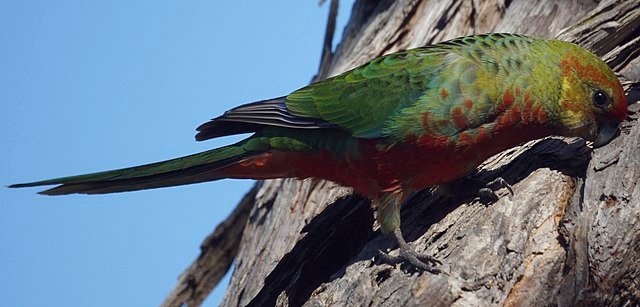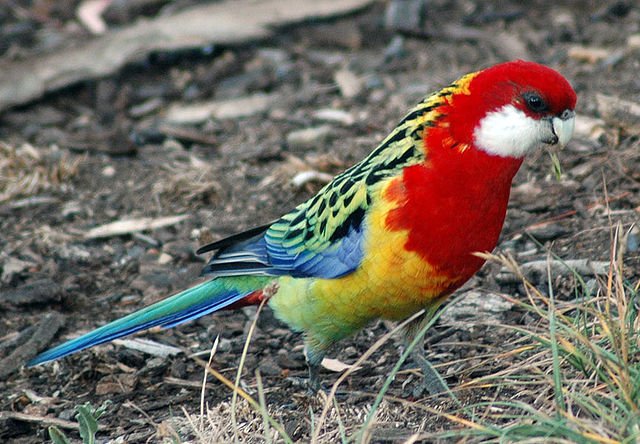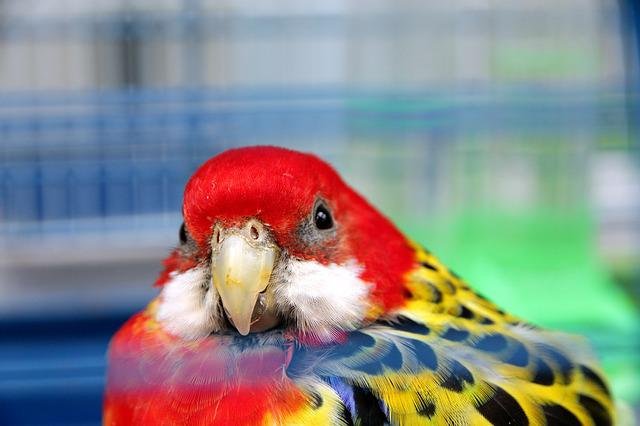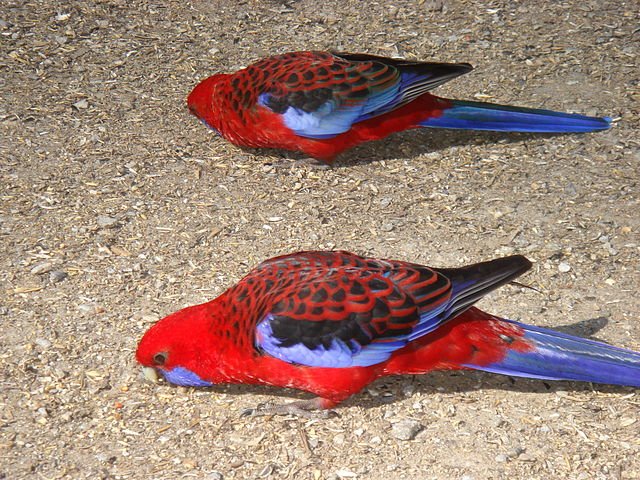Do you know that there was a time when the Western Rosella were seen as vermin and permitted to be killed or captured by people? Later, they were declared as ‘protected native species’ that are likely to become extinct and consequently, their destruction was prohibited.
However, now they have become internationally popular as an aviary bird because of their placid and sociable nature comparing to other species of Rosellas. I think you all would love to keep such kind of bird as your companion. But, before that, we should know everything about them, especially their diet and care needs. So, come. Let’s all learn about Western Rosella characteristics, behavior, diet, lifespan, and many more.
What is Western Rosella?
The Western Rosella is the smallest species of Rosella, which belongs to the family of parrots. It is also known as the Stanley Rosella, Earl of Debry’s parakeet, and Yellow-cheeked parakeet. The Western Rosella is only found in the coastal areas of South-western Australia.
These birds are easily viewed and vividly colorful. The head, neck, and underbody of males are mostly red, whereas those of females and juveniles are mottled red. However, their cheek patches are yellow or cream, which is an identifying feature of the Western Rosella.
There are three subspecies of these birds, which differ by the size and color of the cheek patch, the color of the scalloping on the upper body, and the extent of red on the underbody. These three subspecies can interbreed.
Western Rosella Personality and Behavior
Western Rosella is usually seen in pairs, but sometimes they can gather in groups of twenty. Their habitats are fully or partly cleared eucalypt forests and woodlands, riverine forests, farmland, orchards, roadsides, gardens, cultivated areas, wooded savanna, and shrubland.
Normally, individuals remain sedentary, however, they may come out if there are abundant sources of seeds. Also, when individuals are feeding in open areas, people can approach them quite close to them without disturbing their feeding.
These Western Rosellas have discreet behaviors from other types of Rosellas and they are often noisy except when feeding. Usually, when roosting in groups, vocalizations of these birds can be heard either as soft chattering or rapid high pitched voices.
These birds have a melodious call and it is more pleasant than the calls of Conures, Cockatoos, or Macaws. Unlike most other parrots, the Western Rosella is less capable of talking, but it can mimic songs and tunes. Because of this, if they are not properly socialized, sometimes they can be nippy.
Western Rosella Diet
The Western Rosella is predominantly herbivorous. In their natural diet, they usually feed on grass and plant seeds, flowers, and fruits. However, they eat insects and their larvae as well, especially in their breeding season to acquire more proteins for their bodies.

Generally, Western Rosellas feed on the foliage of trees and shrubs and they also forage in the ground, mostly in shaded areas. Because of this particular diet, these birds are harmful to fruit and grain crops, and therefore, they were declared as vermin and the Australian state gave permission to kill or capture them.
When it comes to the captive diet, it should be comprised of canary seed, a mixture of millets, sunflower, and safflower. Another diet that can be adapted is Cockatiel seed mixed with Canary seed. Also, fresh fruits and vegetables like apples, blackberries, oranges, mangoes, cucumbers, and sweet potatoes can be fed to them.
As an alternative diet to the seed addicted Western Rosellas, sprouting or germinated seeds can be fed, rather than going into fruits and vegetables. In fact, sprouting seeds are healthier for these birds, because in the process of sprouting, the nutrition level is increased while the fat stored in the seeds is reduced. Sprouting seeds can help to balance the diet of Western Rosellas with the supply of nutrition, such as proteins, vitamins, minerals, enzymes, and chlorophyll.
Western Rosella Lifespan and Breeding
The Western Rosella has a lifespan of 15 or more years. Female Western Rosellas are capable of reproduction when they are about 18 months old, whereas male ones reach reproductive maturity at the age of 2-3 years old. In their natural habitat, Western Rosellas normally breed from September to March.
In the breeding season, male ones bow forward low on the perch, while doing their mating calls. When a female is interested, it also behaves the same. Then, they mutually feed each other and start their actual act of mating.
Once the breeding time comes, they choose a hollow in a limb or tree trunk, usually with a depth of 1 m or more as their nest. Also, they breed in a hollow stump or post. Usually, they breed only 1-2 eggs for a season. Only the female incubates the eggs and it only goes out to be fed by the male in the morning and again in the afternoon.
In the meantime, the male stays at the vicinity of the nest while feeding on the ground and coming to the upper branches when it is time to feed the brooding female.
Western Rosellas as Aviary Birds
The Western Rosellas have a reputation of being favorable as aviary birds because of their non-aggressive nature and pleasant vocalization. The aviculture of these birds began in 1830, while their first successful breeding in captivity took place during the early 20th century. They are most popular in aviaries and zoological gardens and their population in captivity has been increased due to their successful reproduction along with the placid nature. In captivity, the red-backed Western Rosella is the most popular subspecies of Western Rosellas.
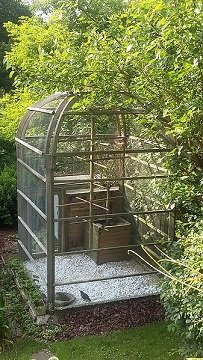
In the International Union for Conservation of Nature (IUCN) red list (2013), the Western Rosella was declared as the ‘species of least concern’. This implies that these birds are becoming less common and locally extinct which leads to a decrease in population, mainly due to the removal habitats. Therefore, Western Rosellas are protected by the Convention on International Trade in Endangered Species of Wild Fauna and Flora (CITES).
Photo used in this article are from :
Avia55 / CC BY (https://creativecommons.org/licenses/by/2.0)
